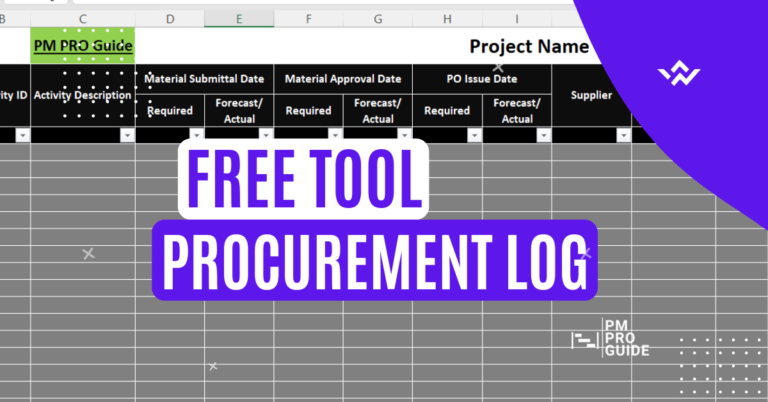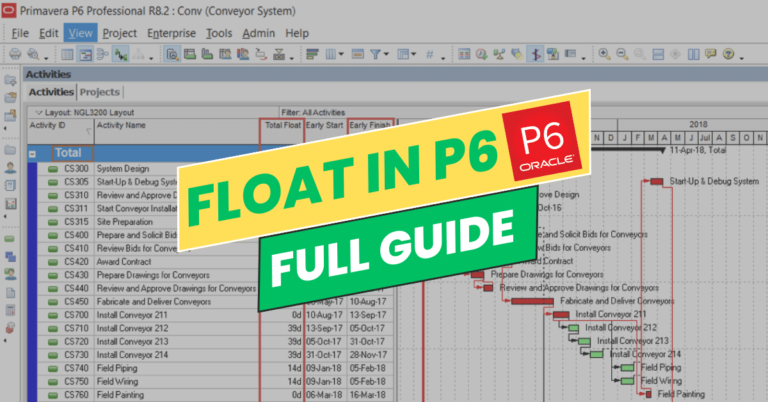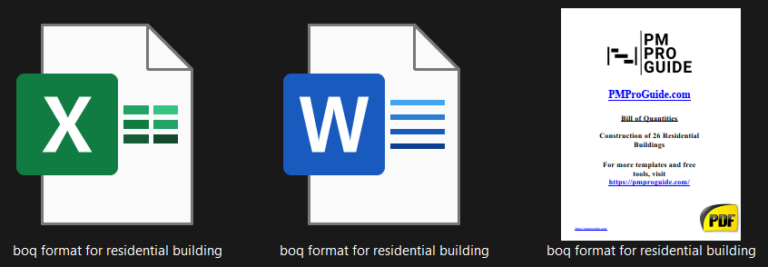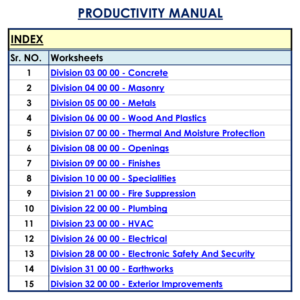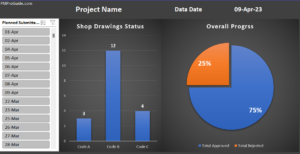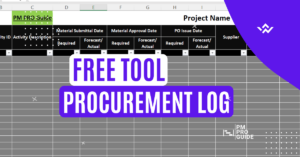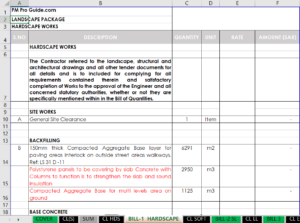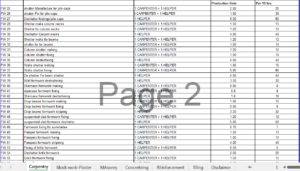As project managers, we know the importance of effective project scheduling and the role it plays in ensuring successful project execution. However, not all project schedules are created equal. In this comprehensive guide, we will explore the power of a Level 3 Schedule and how it can enhance your project management skills. We will delve into the intricacies of project scheduling and the critical path method, providing you with the knowledge and tools necessary for optimized success.
Key Takeaways
- A Level 3 Schedule is a valuable tool for mid-level project breakdown.
- Understanding project schedule levels is essential for effective project planning.
- The critical path method is a key technique used in Level 3 scheduling for time management.
- Creating a Level 3 Schedule requires careful planning and attention to detail.
- Examples of Level 3 Schedules can provide valuable visual representations for various industries.
Understanding Project Schedule Levels
In project management, a schedule is a critical tool that serves as a roadmap for the project’s execution. However, not all schedules are created equal. Project schedules are typically organized into different levels, from the high-level overview of a Level 1 Schedule to the detailed execution plan of a Level 5 Schedule. Understanding the different schedule levels is essential for effective project planning and execution.
Level 1 Schedule
A Level 1 Schedule, also known as a master schedule, provides a high-level overview of the project’s major milestones and deliverables. It typically includes the start and end dates for the entire project and helps stakeholders understand the project’s scope and timeline.
Level 2 Schedule
The Level 2 Schedule builds upon the Level 1 Schedule by breaking down the project into major phases or stages. It includes the start and end dates for each phase and helps stakeholders understand the project’s progression and dependencies between phases.
Level 3 Schedule
The Level 3 Schedule provides a mid-level breakdown of the project and is particularly important in construction management. It includes the start and end dates for all major activities or tasks and allows for better coordination and resource allocation. The Level 3 Schedule serves as a primary communication tool for project teams.
Level 4 Schedule
The Level 4 Schedule is a detailed execution plan that includes specific details on how each activity or task will be completed. It outlines the sequence of work, resource allocation, and dependencies, making it essential for project teams to ensure that work is done in the correct order, with the proper resources, and within the allotted time.
Level 5 Schedule
The Level 5 Schedule is the most detailed level and is typically used for complex projects. It includes specific details on how each task will be executed, including the resources required, and is frequently used in the development of construction schedules.
Each level of the project schedule serves a unique purpose, and understanding the different schedule levels is essential for effective project planning and execution. In the next section, we will explore the significance of a Level 3 Schedule and its importance in project planning and construction management.
The Significance of a Level 3 Schedule
In project planning, a Level 3 Schedule occupies a crucial position, particularly in construction management. This tool provides a mid-level breakdown of tasks, allowing for better coordination, and resource allocation. It offers a detailed overview of the project’s timeline, enabling managers to monitor progress and identify potential delays, providing the ability to mitigate them.
Through a Level 3 Schedule, we can identify and eliminate potential roadblocks before they become obstacles to the project’s successful completion. For instance, it helps to identify dependencies between tasks and highlight potential resource constraints. With these insights, we can take proactive measures to allocate additional resources, adjust the timeline, and ensure that the project stays on schedule.
Moreover, a Level 3 Schedule is a valuable tool in communicating with stakeholders. A detailed and comprehensive schedule facilitates meaningful conversations and helps stakeholders understand the progress and potential roadblocks that the project may encounter. This level of transparency is essential in ensuring that all stakeholders are aligned and working towards the same objective.
Implementing the Critical Path Method in Level 3 Scheduling
Level 3 scheduling is a powerful tool for project planning and coordination, but the true potential of this technique is unlocked through the implementation of the Critical Path Method (CPM). The CPM is a project management technique that identifies the critical path in a project, allowing managers to allocate resources and manage time effectively.
At its core, the CPM is a tool for time management. By identifying the critical path, which is the longest sequence of dependent tasks in a project, you can focus your resources and attention on the areas that require them the most. This helps to minimize delays and ensure that the project is completed on time.
How to Implement the CPM in Level 3 Scheduling
Implementing the CPM in Level 3 scheduling requires a few key steps:
- Define the activities: The first step is to identify all of the activities required to complete the project. This includes both dependent and independent tasks.
- Determine the sequence: Once you have identified all of the activities, the next step is to determine the sequence in which they need to be completed. This involves identifying dependencies between tasks and determining the order in which they need to be completed.
- Estimate duration: For each activity, you will need to estimate the duration required to complete it. This helps to determine the overall timeline of the project.
- Identify the critical path: Once you have completed the previous steps, you can identify the critical path. This is the longest sequence of dependent tasks and represents the minimum amount of time required to complete the project.
- Allocate resources: Finally, you can allocate resources and manage time based on the critical path. This helps to ensure that you are focusing your resources on the areas of the project that require them the most.
By following these steps and implementing the CPM, you can effectively manage time and resources in your Level 3 Schedule. This helps to ensure that your project is completed on time and within budget.
Creating a Level 3 Schedule: Best Practices
Building a successful Level 3 Schedule requires careful planning and attention to detail. The following best practices will help you create a robust Level 3 Schedule that drives project success.
1. Define Key Deliverables
Begin by identifying the key deliverables for your project. These are the measurable outcomes that must be achieved for the project to be considered a success. By defining these deliverables upfront, you can ensure that your Level 3 Schedule is aligned with project goals and objectives.
2. Establish Milestones
Milestones are significant points in your project timeline that mark progress towards deliverables. They are useful for monitoring progress, identifying potential roadblocks, and keeping your team motivated. When creating your Level 3 Schedule, be sure to include key milestones and allocate resources accordingly.
3. Integrate Dependencies
Dependencies refer to the relationship between tasks. By integrating dependencies into your Level 3 Schedule, you can ensure that each task is completed in the correct sequence. This is crucial for maintaining project momentum and avoiding delays.
4. Utilize Resources Effectively
Effective resource allocation is essential for successful project management. When creating your Level 3 Schedule, consider the availability of resources and allocate them accordingly. This can include personnel, equipment, and materials.
5. Monitor Progress and Adjust Accordingly
Once your Level 3 Schedule is in place, it’s essential to monitor progress regularly. This will allow you to identify potential delays or issues and make adjustments accordingly. By staying nimble and responsive, you can ensure that your project stays on track.
By following these best practices, you can create a comprehensive Level 3 Schedule that sets your projects up for success. A well-executed Level 3 Schedule is a crucial tool for any project manager in the construction industry, delivering improved project management and construction scheduling.
Examples of Level 3 Schedules
Level 3 Schedules can be applied to various industries, but they are especially useful in construction management. A Level 3 Schedule provides a mid-level breakdown of tasks, allowing better coordination and resource allocation. Here are a few examples of how Level 3 Schedules can be applied in construction.
Example 1: Commercial Construction Project
A commercial construction project involves multiple stakeholders, and it’s imperative to have clear project timelines. In this Level 3 Schedule, the key deliverables include obtaining permits, site preparation, and installation of structural elements. The milestones include the completion of the foundation and the framing work. The dependencies include obtaining permits before beginning site preparation. By following this Level 3 Schedule, the commercial construction project can stay on track and ensure timely completion.
Example 2: Residential Home Construction
A residential home construction project involves various trades, including carpenters, electricians, and plumbers. In this Level 3 Schedule, key deliverables include pouring the foundation, framing the walls, and installing the roof. The milestones include the completion of rough electrical and rough plumbing work. The dependencies include installing the roof before beginning interior finishing. This Level 3 Schedule helps to ensure timely project completion and high-quality construction.
Example 3: Road Construction Project
| Deliverables | Milestones | Dependencies |
|---|---|---|
| Obtaining permits and approvals | Completion of earthwork and grading | Approval of permits before beginning earthwork |
| Installation of stormwater drainage system | Completion of base course material | Completion of earthwork and grading before installing drainage system |
| Installation of pavement and striping | Approval of final inspection for project completion | Completion of base course material before paving |
A road construction project involves several stages and requires careful coordination between the different teams. In this Level 3 Schedule, the key deliverables include permit approvals and the installation of the pavement and striping. The milestones include the completion of the earthwork and grading, and approval of the project’s final inspection. The dependencies include obtaining permits before beginning the earthwork, completing the base course material before installing the drainage system, and completing the base course material before paving. By adhering to this Level 3 Schedule, the road construction project can avoid delays and ensure timely completion.
These examples highlight the versatility and practicality of a Level 3 Schedule. By tailoring your Level 3 Schedule to your specific project, you can ensure efficient resource allocation, effective time management, and successful project execution.
Conclusion
As we conclude our guide to Level 3 Scheduling, we hope that you have gained valuable insights into project management and scheduling. Through the different sections, we have explored the significance of a Level 3 Schedule, the critical path method, and best practices for creating a robust Level 3 Schedule.
By implementing Level 3 Scheduling in your project management approach, you can effectively break down tasks and allocate resources, leading to timely and successful project execution. The mid-level breakdown of tasks provided by a Level 3 Schedule allows for better coordination and enhances communication among project stakeholders.
Project management is a dynamic field that requires continuous learning and improvement. By honing your project scheduling skills, you can increase your efficiency, improve decision-making, and ultimately enhance your overall project management performance.
Therefore, we encourage you to integrate Level 3 Scheduling into your project management toolkit and start unlocking your full potential. Build your Level 3 Schedule using the guidelines provided in this guide, and watch as your projects thrive.
Thank you for reading our guide to Level 3 Scheduling, and we wish you all the best in your project management endeavors.
FAQ
What is a Level 3 Schedule?
A Level 3 Schedule is a mid-level breakdown of tasks in project planning that provides better coordination and resource allocation.
What are the different project schedule levels?
The different project schedule levels include Level 1 Schedule, Level 2 Schedule, Level 3 Schedule, Level 4 Schedule, and Level 5 Schedule, each serving a unique purpose in project planning.
Why is a Level 3 Schedule important in construction management?
A Level 3 Schedule is important in construction management as it helps in better project execution by providing a detailed breakdown of tasks and facilitating resource allocation.
What is the critical path method, and how does it relate to Level 3 scheduling?
The critical path method is a technique used in Level 3 scheduling to identify the longest sequence of dependent tasks. It helps project managers allocate resources and manage time effectively.
What are the best practices for creating a Level 3 Schedule?
The best practices for creating a Level 3 Schedule include defining key deliverables, establishing milestones, and integrating dependencies for a comprehensive project management approach.
Can you provide examples of Level 3 Schedules?
Yes, we will provide examples of Level 3 Schedules from various industries, including construction, to showcase their benefits and applications in project management.
How can a Level 3 Schedule enhance project management skills?
By understanding project schedule levels, implementing the critical path method, and following best practices, a Level 3 Schedule can significantly enhance project management skills and drive successful project execution.

